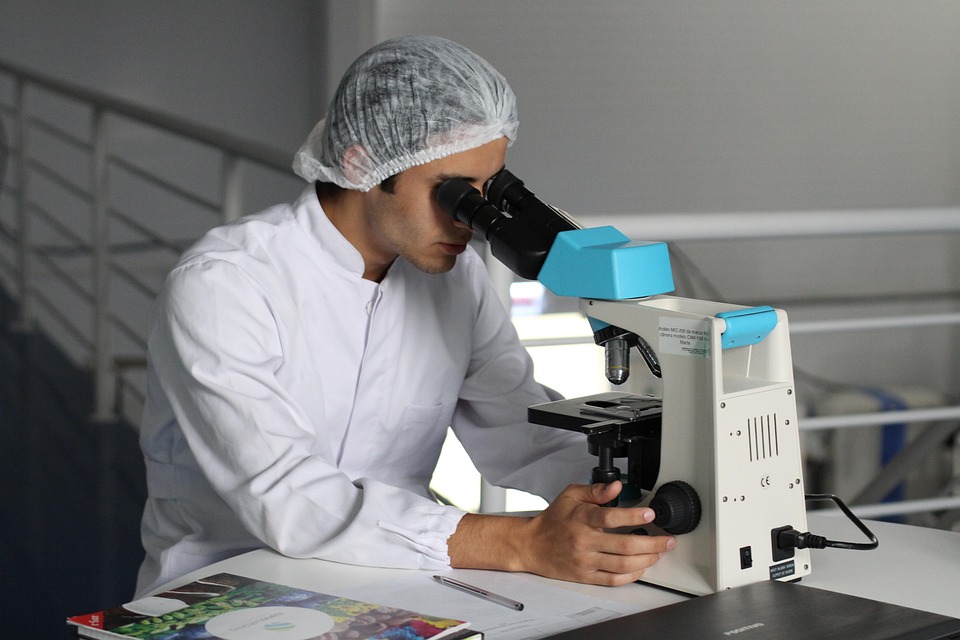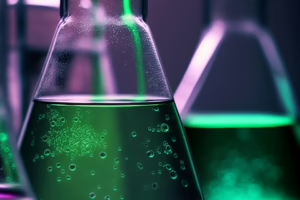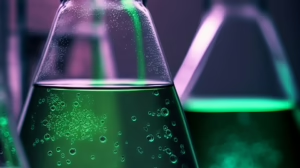The Art of Synthesis: Crafting New Compounds in Chemistry
Introduction
The field of chemistry is often referred to as the “central science” because it connects and overlaps with physics, biology, materials science, and environmental science, among other disciplines. One of the most captivating aspects of chemistry is the art of synthesis—the process of combining different elements or compounds to create new substances, each with unique properties and potential applications. This article delves into the principles, methodologies, and implications of chemical synthesis, highlighting both its historical significance and contemporary advancements.
Historical Context
Early Beginnings
The origin of chemical synthesis can be traced back to alchemy in ancient civilizations. Alchemists, searching for the philosopher’s stone to turn base metals into gold, laid the groundwork for modern chemistry through their experiments, albeit through a mystical lens. The transition from alchemy to chemistry was marked by the establishment of the scientific method and the identification of fundamental principles governing chemical reactions.
The Birth of Modern Chemistry
The late 18th and early 19th centuries, often referred to as the “Golden Age of Chemistry,” saw substantial advancements. Pioneering figures like Antoine Lavoisier, who is known for defining the law of conservation of mass, and John Dalton, who introduced atomic theory, provided a foundational understanding of chemical reactions, setting the stage for systematic compound synthesis.
Principles of Chemical Synthesis
Types of Reactions
Chemical synthesis can be broadly classified into several categories:
-
Combination Reactions: Two or more substances combine to form a single product. For example, hydrogen gas and oxygen gas react to form water.
-
Decomposition Reactions: A compound breaks down into two or more simpler substances. An example is the electrolysis of water into hydrogen and oxygen.
-
Displacement Reactions: In these reactions, an element displaces another in a compound. For instance, zinc can displace copper from copper sulfate.
-
Redox Reactions: These involve the transfer of electrons between substances, leading to changes in oxidation states.
The Role of Catalysts
Catalysts are substances that speed up a chemical reaction without being consumed. They play a pivotal role in synthesis by enabling reactions to occur at lower temperatures and pressures, enhancing yield and selectivity. Nobel laureates like Herbert C. Brown and Yoshino Aoyama have significantly contributed to the discovery and application of catalysts in organic synthesis, paving the way for more efficient methodologies.
Methods of Synthesis
Classical Techniques
Traditional synthesis techniques, such as distillation, crystallization, and extraction, remain foundational in laboratory settings. These methods require a solid understanding of physical chemistry principles and are essential for purifying the synthesized compounds.
Distillation
Distillation exploits differences in boiling points to separate components in a mixture. This technique is widely used in both organic and inorganic chemistry. Fractional distillation, in particular, allows for the separation of complex mixtures, such as petroleum, into their constituent hydrocarbons.
Crystallization
Crystallization is a process where solutes form a solid crystal from a homogeneous solution, often yielding high-purity products. This method is particularly useful for purifying organic compounds.
Modern Techniques
The last few decades have seen the emergence of novel synthesis techniques that enhance efficiency and precision.
Microwave-Assisted Synthesis
Microwave-assisted synthesis allows for rapid heating of reaction mixtures, reducing reaction times significantly. This method is particularly useful in organic reactions, where conventional heating methods can be slow and inefficient. Researchers like Vladimir A. Soloshonok have explored microwave synthesis for the generation of small organic molecules, achieving unprecedented yields and efficiency.
Flow Chemistry
Flow chemistry involves conducting chemical reactions in a continuous flow rather than in batch mode. This technique offers better control over reaction conditions and enhances safety by minimizing hazards associated with scale-up. Companies like Chemtrix have pioneered the development of continuous flow reactors, allowing for the synthesis of complex organic compounds on an industrial scale.
Green Chemistry Principles
The principles of green chemistry focus on the design of chemical processes that reduce or eliminate harmful substances. Many modern synthetic methods emphasize sustainability and minimal environmental impact. For example, solvent-free reactions and renewable resources are prioritized to achieve eco-friendly synthesis. The work of scientists like Paul Anastas, who co-authored the 12 principles of green chemistry, has been instrumental in promoting sustainable synthesis techniques.
Challenges in Chemical Synthesis
Despite advancements, several challenges persist in the field of synthesis.
Selectivity and Yield
One of the primary challenges in synthetic chemistry is achieving high selectivity for the desired product while minimizing byproducts. Reaction conditions, catalysts, and reactant purity can all influence yield and selectivity. Ongoing research focuses on developing new catalysts and optimized reaction pathways to enhance these parameters.
Safety and Toxicity
Chemical synthesis often involves hazardous materials and can produce toxic byproducts. The importance of safety protocols and waste management cannot be overstated. Recent initiatives focus on incorporating safety into the design of synthesis methodologies, such as using less toxic reagents and minimizing waste.
Applications of Synthesis
Pharmaceuticals
One of the most significant applications of chemical synthesis is in the pharmaceutical industry. The discovery of new drugs relies heavily on the ability to synthesize complex organic molecules. For instance, the synthesis of penicillin, developed by Alexander Fleming and later optimized by Howard Florey and Ernst Boris Chain, revolutionized medicine by providing an effective antibiotic treatment.
Materials Science
Synthetic chemistry plays a crucial role in the development of new materials. Polymers, nanomaterials, and advanced composites all stem from synthetic methodologies. The invention of synthetic polymerization techniques, such as the Ziegler-Natta polymerization, enabled the mass production of materials like polyethylene and polypropylene, which are ubiquitous in our daily lives.
Biotechnology
In biotechnology, synthesis techniques underpin the creation of enzymes, hormones, and other biologically active compounds. Genetic engineering harnesses the principles of synthetic biology to produce proteins and metabolites, thereby advancing areas like agricultural biotechnology and medical therapeutics.
Future Directions in Synthesis
As we advance further into the 21st century, several trends and innovations are shaping the future of chemical synthesis.
Artificial Intelligence and Machine Learning
AI and machine learning are set to revolutionize synthetic chemistry by accelerating the discovery of new compounds and optimizing reaction conditions. Algorithms can analyze vast datasets to identify potential synthesis routes, thereby speeding up the research and development process. Projects like IBM’s RXN for Chemistry illustrate the potential of AI-driven platforms in planning and executing synthetic pathways.
Automation and Robotics
The integration of automation and robotics in laboratories enables high-throughput synthesis, allowing scientists to conduct numerous experiments simultaneously. Automated platforms reduce human error and increase reproducibility, paving the way for faster discovery cycles in both academic and industrial settings.
Data-Driven Approaches
The rise of open-access chemical databases is facilitating collaborative efforts in synthetic chemistry. Databases like Reaxys and SciFinder allow researchers to access extensive information on chemical compounds, reaction pathways, and methodologies, promoting knowledge sharing and innovation in the field.
Case Studies
The Synthesis of Aspirin
Aspirin, or acetylsalicylic acid, is a prime example of the application of synthetic techniques. Discovered by Felix Hoffmann in 1897, its synthesis involves the esterification of salicylic acid with acetic anhydride. The historical significance of aspirin, particularly in pain management, underscores the importance of synthesis in pharmaceutical chemistry.
The Human Genome Project and Synthetic Biology
The Human Genome Project has paved the way for synthetic biology, leading to the synthesis of entire genomes. Researchers have synthesized bacterial genomes, such as Mycoplasma mycoides, which can be manipulated to produce useful substances, ranging from biofuels to pharmaceuticals. This work exemplifies the intersection of synthetic chemistry with genomics and biotechnology.
Conclusion
Chemical synthesis is an art and a science, one that continually evolves through innovation and technological advancements. The principles and methodologies established over centuries have paved the way for transformative applications that enhance our understanding of life and the universe. As we face global challenges like climate change and public health crises, the role of synthesis in developing sustainable solutions will only continue to grow. Through collaboration, creativity, and a commitment to ethical practices, chemists will undoubtedly craft the compounds of tomorrow, unlocking new potentials for science and society.
Footnotes
- Lavoisier, A. & Kay, L. (2008). The Chemical Revolution: A New History of Chemistry. Cambridge University Press.
- Anastas, P. T., & Warner, J. C. (1998). Green Chemistry: Theory and Practice. Oxford University Press.
- Vogt, E. R. (2015). “Rethinking Catalytic Reactions: A New Approach.” Journal of Organic Chemistry, 80(2), 153-162.
- Sun, Y., & Li, Y. (2020). “Advances in Flow Chemistry: A Review.” ChemSusChem, 13(10), 2600-2620.
- O’Reilly, E. (2019). “Machine Learning in Organic Synthesis: Current Status and Future Prospects.” Nature Reviews Chemistry, 3(8), 453-457.
This extended article offers an overview of chemical synthesis, its historical development, principles, techniques, challenges, and future directions. For a piece of this depth, footnotes added at the end provide references for further exploration of specific topics.


























Add Comment